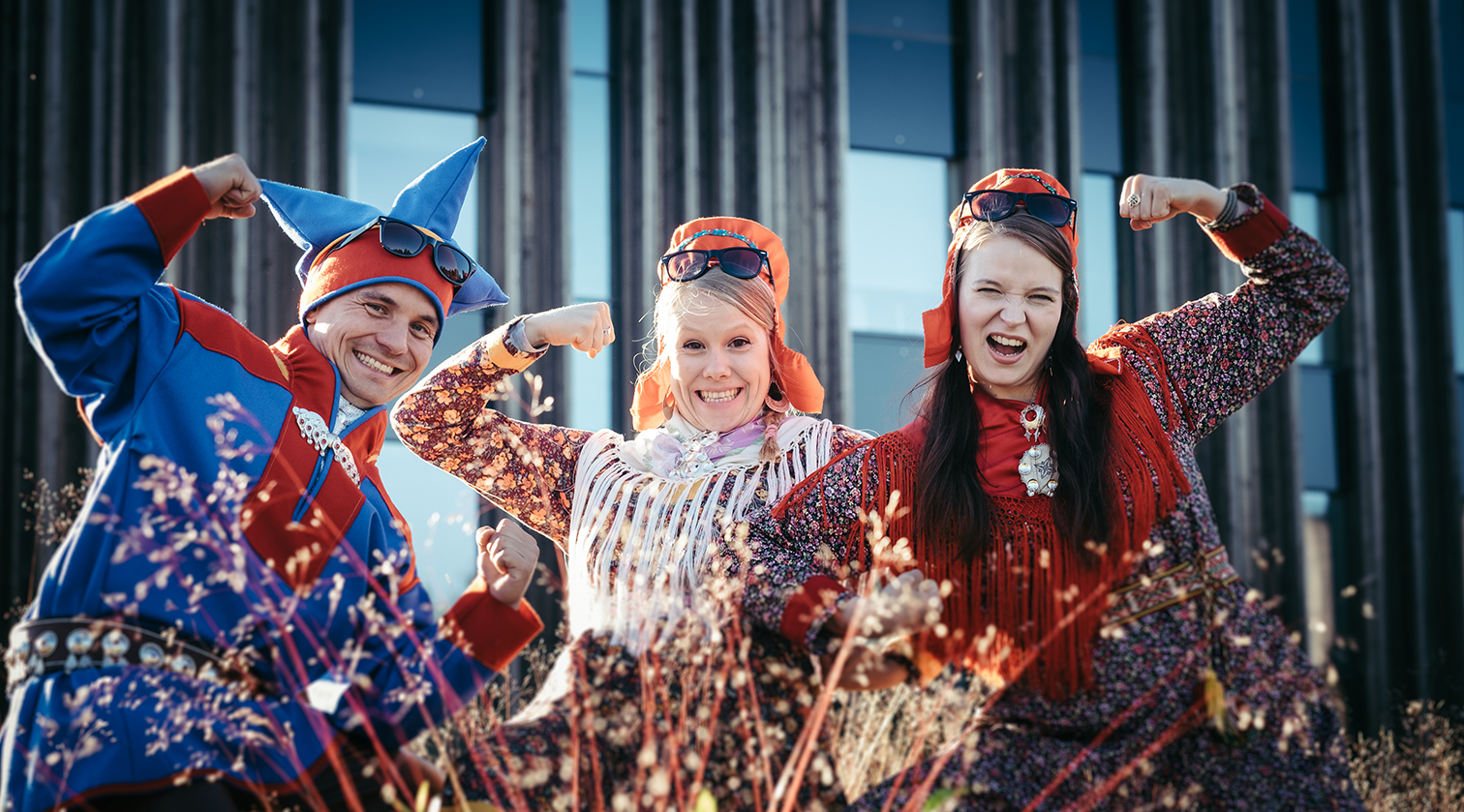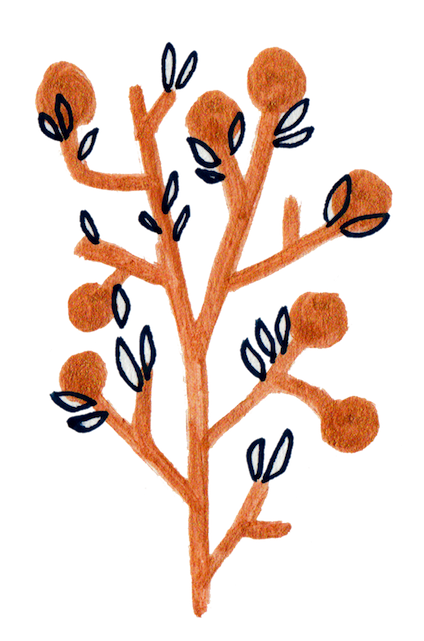Quick guide to Saami Culture
Finland is home to around 10,000 Saami people. This quick guide will help keep you up-to-date with Saami culture! Listen to the Saami national anthem, learn what Saami clothes mean to their wearers and find out what it means if someone yoiks you. All links take to English websites except some which are marked as (FI).

Sámi Gákti - Saami Clothing
The Saami national clothes are a source of personal joy and pride for Saami people. Saami clothing is often made by the wearer’s family members, relatives or close friends. It is not only special because of its ornate appearance, but also because of the information included in the garments. The clothing and its different parts indicate the gender of the wearer, his or her home region, family and marital status. Saami people still wear their national clothing actively, and their glamour can be seen especially at celebrations. The clothing is known as gákti in North Saami, mááccuh in Inari Saami and määccaǩ in Skolt Saami. The national Saami clothing has a great significance in Saami culture.
Image Gallery: Me and my Saami clothing (FI) and more information about Saami clothing
The Saami clothing is the most clearly visible and well-known feature of Saami culture. This also makes it a source of cultural appropriation. Check out the visual guidelines for presenting Saami culture. (FI)
“The gákti and Sámi clothing are not a costume. They are an integral part of a cultural identity and should be worn only by those who understand and appreciate them.” An article discussing about cultural appropriation from a Saami person living in Norway.
“The gákti is like a second skin”
— Outi Länsman

The Yoik Tradition
The yoik is a kind of Saami folk music. In the words of Nils-Aslak Valkeapää, who modernised the tradition, a yoik is also much more than a song. It is also a kind of social business card. In places that still have a thriving yoik tradition, people sing yoiks about places and animals, but also about each other. When a Saami person meets a friend, he or she may greet them by singing a yoik devoted to that person, or, in other words, yoik them.
Traditionally, a yoik has several functions in everyday life. A reindeer herder watching over his herd may yoik for many different reasons. A yoik repels predators, for instance, because they recognise the human voice. A yoik is also a good way for remembering things, yoiking and thinking about friends or events related to them is a good way to pass the time.
Watch Saami Jon Henrik yoik his late friend on Talent Sweden:
"There is a special rule related to personal yoiks: it is inappropriate to sing a yoik composed about oneself. This is viewed as a form of self-flattery” – Encyclopaedia of Saami Culture
The different Saami languages have their own names for their traditional music. The music is different in terms of both name and style, which can be compared to the regional variation in Saami clothing. In the Saami areas of Finland, you can hear the North Saami luohti, Inari Saami livđe ja Skolt Saami leu’dd (FI).
A yoik in a fusion song (YouTube)
”People also yoik in different social situations, such as a marriage proposal. Proposal yoiks have been composed for brides.” Read more about the Saami musical tradition.

Saami duodji - handicrafts
Saami handicrafts, known as duodji, show the Saami people’s strong connection to nature – most of the materials have traditionally been and continue to be gathered from nature. The gathering of handicraft materials is also a good example of how closely connected Saami culture is to the seasons, different materials can and should only be collected at a certain time of year.

The Saami Duodji label is the symbol of genuine Saami handicrafts

Saami handicrafts were traditionally made to suit practical needs. Fur from the reindeer’s legs and scalp is used to make warm fur boots and mittens for the winter, reindeer calf pelts are used for hats, and tanned reindeer leather is used for bags, slippers and, nowadays, also phone cases. Artisans known how to use all parts of a reindeer or tree, including the veins, bones, bark and roots. Nowadays, Saami duodji is also a form of art, and objects are made for decorative purposes.
“The problem is that tourists can’t see the difference and don’t know what is actually made by Saami artisans and what is not.”” You can recognise a genuine piece of Saami handicraft by the Saami Duodji label.
Duodji-shop online store selling Saami handicrafts
Read more about Saami handicrafts
Erica Huuva – silver jewellery

Basic Facts
The Saami National Day is celebrated on 6th of February. The Saami flag, the national symbol of the Saami, was granted official status in 1986.
The official national anthem of the Saami is Saami soga lávlla (YouTube), which was composed by Norwegian Arne Sørlie with lyrics by Saami Isak Saba.
However it is generally known that many Saami people consider Nils-Aslak Valkeapää’s yoik Saami eatnan duoddariid to be their national anthem:

Finland is home to around 10,000 Saami people. The Saami National Day is celebrated on February 6
Estimates of the total Saami population range from 50,000 to 100,000. In Finland, the Saami population is around 10,000. Questions about defining who is Saami make it difficult to estimate the size of the population. Saami people are the only indigenous people in the EU.
Three Saami languages are spoken in Finland: North Saami, Skolt Saami and Inari Saami. There are nine Saami languages altogether, all of which are endangered. Kuáti (FI) is an early childhood education website in Saami. You can find other tools for studying the languages here and a complete list of all the Saami languages here.
The Saami homeland, Sápmi is located in Finland, Norway, Sweden and Russia, transcending the national borders. The Saami area of Finland is made up of the municipalities of Enontekiö, Utsjoki and Inari as well as the area of the Lappi reindeer herding cooperative. More than half of the Saami in Finland now live outside of the Saami area. There is a relatively large and active Saami minority in Helsinki, for instance. City-Saamit ry (FI), an organisation operating in the Helsinki metropolitan area, aims to promote a sense of community among the Saami people living in the south.
The Saami Parliament is the highest political body of the Saami in Finland. Its elections are held every four years. YleSápmi is responsible for news broadcasts on Saami topics in Finland.

The Suohpanterror artivist collective takes a visible stand on Saami politics through artistic means
Suohpanterror, a collective of Saami artists, takes a visible stand on Saami politics. Suohpanterror is known for its critical and provocative propaganda posters. In 2016, Suohpanterror received the Kritiikin Kannukset -palkinto (FI) arts prize, awarded by The Finnish Critics’ Association.
@OutiLansman, @TiinaSanilaAikio and @PetraLaiti are a few Twitter users who tweet about Saami-related matters. For more Saami fashion and handicrafts on Instagram, check out: @Samekofter and @Kautokeino_Solvsmie. Some Saami films: Sami Blood, Kaisa’s Enchanted Forest and Saami artists: Amoc (rap), Sofia Jannok (pop) and Ylva (electronic).
In addition to these, you can learn more about the ILO 169 convention on the rights of indigenous peoples, the forced Fennicisation or assimilation of the Saami people into the majority culture, Saami means of livelihood, as well as Saami contemporary arts, theatre and literature. You can also read an article about the cultural appropriation of Saami.
Information about all the topics above, as well as many others, can be found in the Encyclopedia of Saami Culture.

